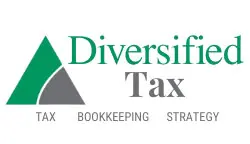Exploring the Difference Between Tax Deductions and Tax Credits
Table of Contents
Exploring the Difference Between Tax Deductions and Tax Credits
Tax deductions and tax credits are two common concepts used in the tax world. Tax deductions and tax credits can be confusing, especially for those who are new to the world of taxes. It is important to understand the differences between the two, as they can help you save money on your taxes. This blog post will explore the differences between tax deductions and tax credits and how you can use them to your advantage.
What is a Tax Deduction?
A tax deduction is an amount of money that you can subtract from your taxable income. This lowers your taxable income, which in turn reduces the amount of taxes you owe. Tax deductions are available to both individuals and businesses and come in many different forms. The most common tax deductions are for mortgage interest, charitable donations, and business expenses.
When you file your taxes, you will need to provide proof of the deductions you are claiming. This could include bank statements, receipts, and other forms of documentation. You may also need to provide additional information, such as your Social Security number or driver’s license number.
Tax deductions can be divided into two categories: itemized deductions and standard deductions. Itemized deductions are deductions for specific expenses, such as medical expenses, charitable donations, and home mortgage interest. Standard deductions are deductions for a set amount of money. The amount of the standard deduction is determined by the IRS and changes every year.
What is a Tax Credit?
A tax credit is a dollar-for-dollar reduction in the amount of taxes you owe. This means that if you are eligible for a $1,000 tax credit, your tax bill will be reduced by $1,000. Tax credits are available to both individuals and businesses and come in many different forms.
Like tax deductions, you will need to provide proof of the tax credits you are claiming. This could include bank statements, receipts, and other forms of documentation. You may also need to provide additional information, such as your Social Security number or driver’s license number.
Tax credits can be divided into two categories: refundable tax credits and nonrefundable tax credits. Refundable tax credits are credits that can be used to reduce the amount of taxes you owe, or they can be refunded to you if the total amount of the credit is more than the taxes you owe. Nonrefundable tax credits are credits that can only be used to reduce the amount of taxes you owe.
Similarities between Tax Deductions and Tax Credits
Despite the differences between tax deductions and tax credits, there are some similarities between the two. Both tax deductions and tax credits are available to both individuals and businesses, and both can be used to reduce the amount of taxes you owe.
In addition, both tax deductions and tax credits require documentation and proof of eligibility in order to be claimed. You will need to provide bank statements, receipts, and other forms of documentation to claim the deductions or credits.
Differences between Tax Deductions and Tax Credits
The most significant difference between the two is that a tax deduction reduces your taxable income, while a tax credit reduces the amount of taxes you owe.
Tax deductions are available in two forms: itemized deductions and standard deductions. With itemized deductions, you need to provide proof of the expenses you are claiming in order to be eligible for the deduction. With standard deductions, the amount of the deduction is determined by the IRS and does not require any proof of expenses.
Tax credits are available in two forms: refundable tax credits and nonrefundable tax credits. Refundable tax credits can be used to reduce the amount of taxes you owe, or they can be refunded to you if the total amount of the credit is more than the taxes you owe. Nonrefundable tax credits can only be used to reduce the amount of taxes you owe.
Working with a Tax Professional
Given the complexity of tax deductions and tax credits, it is advisable to work with a tax professional when filing your taxes. A tax professional can help you determine which deductions and credits you are eligible for and provide you with the necessary documentation and proof of eligibility.
In addition, a tax professional can help you maximize your deductions and credits to reduce the amount of taxes you owe. They can also provide you with advice on how to save money on your taxes in the future.
If you are looking for tax services, it is important to find a reputable and experienced tax professional. Be sure to research their credentials and read reviews from other clients before deciding.
Dont’ miss tax tips delivered to your inbox:




